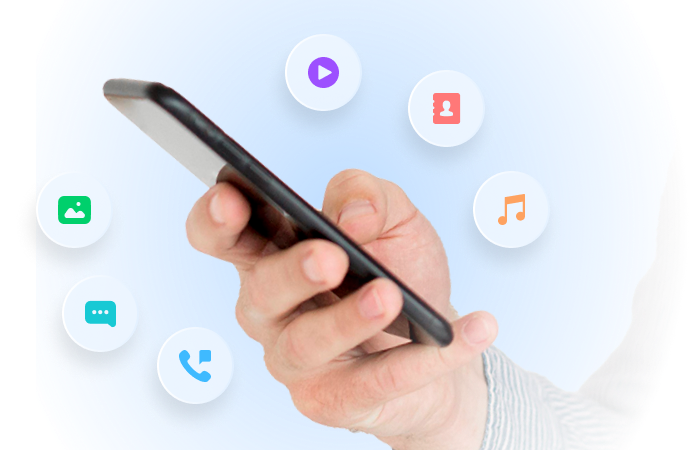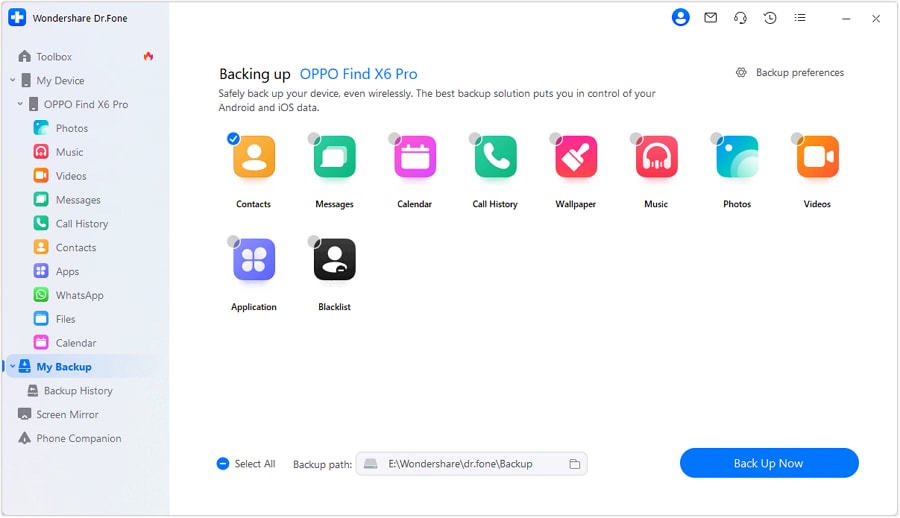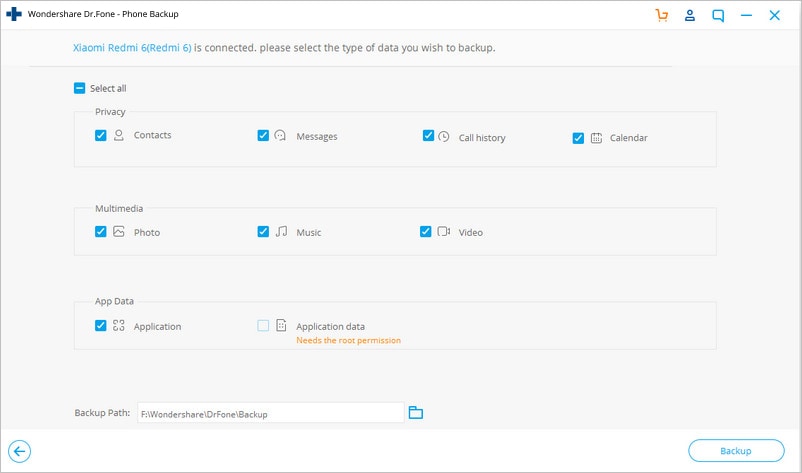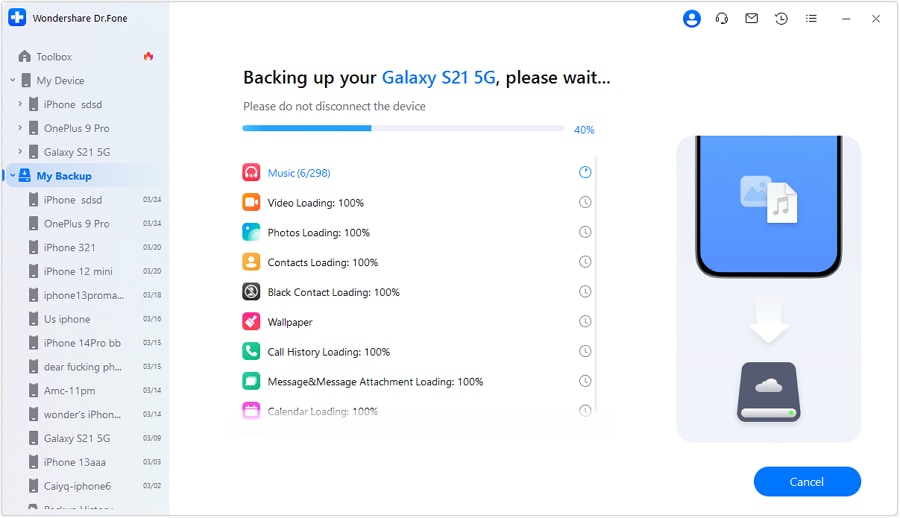
How to Easily Back Up Google Calendar on Android Devices
Android Backup
- Backp Android
- 1. Backup Android to PC
- 2. Backup Android Photos
- 3. Android Wifi Backup
- 4. Backup Phone with Broken Screen
- 5. Backup Android Rom/Firmware
- 6. Backup SD Card on Android
- 7. Backup Android SMS
- 8. Backup Android Phone With Root
- 9. Backup Android to Mac
- 10. Backup Viber Messages
- Android Restore
- 1. Guide to Restore Android Phone
- 2. Backup and Restore Android Phone
- 3. 2 Ways to Restore Contacts on Android: Step-by-Step Guide
- 4. Restore WhatsApp from iCloud
- Backup Apps
- 1. Android Backup Apps to Backup Files
- 2. 6 Apps to Backup Bookmarks
- 3. Top 10 Contacts Backup App
- 4. Backup Android App and App Data
- 5. The Best Android Backup Extractor
- 6. Top 5 Android Backup Softwares
- 7. 6 Best Android Backup Softwares
- 7. 7 Android Fastboot Reset Tools
- Samsung Backup
- 1. Back Up Samsung to Google Drive
- 2. Backup Contacts on Samsung
- 3. Backup Text Messages on Samsung
- 4. Backup and Restore Samsung Galaxy
- 5. Backup Everything on Samsung
- 6. Backup Samsung Galaxy to PC
- 7. 10 Samsung Cloud Backup Services
- 8. Solution For Samsung Message Backup
- 9. 5 Samsung Photo Backup Solutions
- 10. Backup Samsung S10 to PC
- ● Manage/transfer/recover data
- ● Unlock screen/activate/FRP lock
- ● Fix most iOS and Android issues
- Back up Now Back up Now Back up Now
Oct 24, 2025 • Filed to: Backup & Restore Solutions • Proven solutions
Dr.Fone Basic:
Better Control for Your Phone
Manage, transfer, back up, restore, and mirror your device
Over the years, we've used our Android phones to track important dates like birthdays, anniversaries, and plans. If your phone gets stuck on a screen, restarts repeatedly, or breaks, a factory reset may be necessary. This will delete all your data, including your calendar. Creating a backup Google calendar is crucial to keeping your important moments and events safe.
You can back up your calendar on Android with Dr.Fone, your Google Account, and the Google Calendar Backup Utility. Keep reading to learn how. The "Trash" box in Google Calendar can retrieve lost events, and we'll also discuss third-party backup options. This ensures that your calendar is always safe and easy to access.
- Part 1. Benefits of backing up Google Calendar events
- Part 2. Backup Google Calendar Android Using Wondershare Dr.Fone Basic-Phone Backup (Android)

- Part 3. Backup Google Calendar Android Using Google Account
- Part 4. Backup Google Calendar Android Using Google Calendar Backup Utility
- Part 5. Recover Lost Google Calendar Events Using “Trash”
- Part 6. Get Back Lost Android Calendar Using a Backup File
Part 1. Benefits of backing up Google Calendar events
There are many good benefits to backing up Google Calendar on Android:
- Saves against losing data
- Quick recovery
- Use any gadget to access
- Long-term archiving
Part 2. Backup Google Calendar Android Using Wondershare Dr.Fone Basic-Phone Backup (Android)
Most people use cloud or local backups to retrieve their important files if they lose them. If you haven't set up your Android device to back up, you will require a specialized backup tool to secure your data. Wondershare Dr.Fone has many valuable features and can easily back up important files, including your Google Calendar.
1.1 Features:
Here are some of the best things about Dr.Fone - Phone Backup (Android) that make it a solid choice for Android users who want to back up their calendar on Android and get back lost events.
- One click is all it takes to back up your Android files to your computer.
- You can preview your backup and then recover it to any Android device.
- More than 8000 different Android smartphones can use it.
- When you back up, export, or restore data, you don't lose any of it.

Dr.Fone - Phone Backup (Android)
Flexibly Backup Google Calendar Android
- Selectively backup Android data to the computer with one click.
- Preview and restore the backup to any Android device.
- Supports 8000+ Android devices.
- There is no data lost during backup, export, or restoration.
1.2 How to Use Dr.Fone for backup calendar on android
Here is a step-by-step guide to using Dr.Fone - Data Backup (Android) to back up your Calendar on your Android device.
Step 1: Open Dr.Fone on your computer, connect your Android phone to it, and then choose "Phone Backup" from the list of functions.

Step 2: On your Android, turn on USB debugging mode. After that, click "Backup" to start the easy backup process.

Step 3: In the new window, pick the types of files you want to back up. Then, click "Backup," and the computer will start the process.

Depending on how much info you have, the backup process could take a while. When you back up your Android phone, just make sure it stays linked and don't use it.

Part 3. Backup Google Calendar Android Using Google Account
You can back up Google Calendar on Android and use your Google account to recover it. If you connect your Android phone to your account, the calendar, media files, documents, and more will be backed up immediately on your phone. Still, this method will only sync your files. If you delete something from your calendar while the internet is on, you will also delete the item from your Google account.
To back up your Google Calendar through your Google account, do the following:
Step 1: Open Settings on your cell phone. Find the "Backup & Reset" option and tap it.
Step 2: Turn on the "Back up my data" tab in the backup options. Tap the "Back up account" option below to access your Google account.
Step 3: Once you've set up your backup account, turn on the "Calendar" choice to have it backed up automatically.

After you follow the steps above, your calendar will be linked to your Google account. You can still access your calendar on Google if you have a Google account, even if you lose or break your phone. Logging in to your account can get your calendar back on a new or reset device anytime.
Part 4. Backup Google Calendar Android Using Google Calendar Backup Utility
The Google Calendar Backup Utility is another way to ensure your calendar is always saved on your Android or any linked drive. After a backup, the files can be restored in Google Calendar or any other planner that works with ICAL.
Directions:
Step 1: Download the Google Calendar Backup Utility and install it.

Step 2: To add a new schedule to back up, click the "ADD" button. The box with the calendar information will appear.

Give the calendar a name that tells you what it's for. Pick a place to store a copy of your Google Calendar.
Step 3: Fill out your Google Calendar information and sign in. Determine which calendar you want to back up by clicking the down arrow next to its name in "My Calendars" and choosing "Calendar settings."

Step 5: Find the "private address" and right-click the green ICAL button to get your calendar's URL.

Step 7: Choose "Copy Link," "Copy Shortcut," or "Copy Link" based on your browser.

Step 8: In the Google Calendar Backup Utility, paste the link's URL into the Google URL field. Click "Save" to close the form.

Step 9: Click the "BACKUP NOW" box. Check the option "Schedule Backup Every..." and choose how often you want backups to happen.
Step 10: Click "MINIMIZE TO TASKBAR" to finish the process.
Important tip
Do not check the "Run when Windows Starts" and "Minimize Program to Task Bar on Start" boxes. If you do, the program will load quietly when Windows starts up.
Part 5. Recover Lost Google Calendar Events Using “Trash”
You can recover deleted items in the "Trash" folder of the Google Calendar app. When you remove something from your Google account, it goes to "Trash" and stays there for 30 days. If you recently removed the calendar reminders, you can get them back by going to the "Trash" folder.
To get to the "Trash" folder and back up your Google Calendar on Android, follow these steps:
Step 1: Sign in to your Google account on your PC by going to Google Calendar.

Step 2: Click "Bin" after pressing the "Settings" button in the upper right spot.

Step 3: A list of all the calendar events that have been erased will appear on your screen. Select the events you want to restore and click the "Restore" button.

Part 6. Get Back Lost Android Calendar Using a Backup File
Backing up your data can save you a lot of trouble if you lose it by mistake. Many Google Calendar users regularly backup calendars on Android, but not all do this. If this sounds like you, you can easily get back all the events you lost by importing those saved files to Google Calendar.
Directions:
Step 1: Sign in to your Google account, open Google Calendar on your PC, and choose "Settings."
Step 2: Click the "Import & Export" button on the left side of the "Settings" page.

Step 3: Drag and drop the backup file from your PC and click "Import."

This will bring over all the events from your chosen backup file, making them easy to view on your Android device.
Author's Verdict:
After exploring several methods for backing up Calendar on Android, including Google Account, Google Calendar Backup Utility, the Trash folder, and backup files, I recommend Dr.Fone Basic Toolkit as the best option. The other methods are also suitable, but Dr. Fone is the best because it has many practical and simple functions. It works with over 8,000 Android devices and makes it easy to get back to calendar events, contacts, photos, movies, etc.
With just a few clicks, Dr.Fone's data backup and recovery tool makes it easy to back up your calendar and get it back when you need it. This all-in-one solution makes things easier and gives you peace of mind that your essential information is safe. The best way to back up your Calendar on Android is with Dr.Fone, which is reliable and adaptable.
Conclusion
You must safeguard your critical dates and events by backing up Google Calendar on Android. This article discusses several ways to keep your calendar information safe. It's easy to set up automatic syncing with a Google account, but you might still delete things by mistake. The Google Calendar Backup Utility can regularly back up your calendar to your computer's storage, and the Trash folder can retrieve recently removed events. Adding backup files to Google Calendar adds one more layer of security.
Wondershare Dr.Fone stands out because it has many features, works with many Android devices, and makes backing up and recovering data easy. Each method has pros and cons, but the most important thing is picking the best one to protect your plan.
FAQs
Dr.Fone Basic:
Better Control for Your Phone
Manage, transfer, back up, restore, and mirror your device



















Daisy Raines
staff Editor